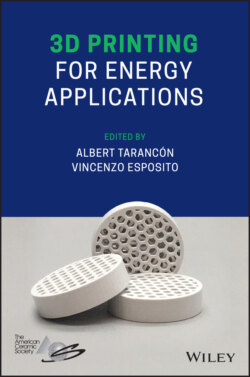Читать книгу 3D Printing for Energy Applications - Группа авторов - Страница 22
1.1.3 Material Gradients in AM
ОглавлениеTraditional manufacturing processes start typically from one feedstock and then convert it into the desired shape. AM processes on account of being a selective consolidation based manufacturing processes offer tremendous flexibility in functional material gradients. Naebe & Shirvanimoghaddam [16] reviewed functionally graded components manufactured through different methods and showcased the importance of AM for expanding the scope and application of functional components. Loh, Pei, Harrison, and Monzón [17] reviewed functionally graded AM components and showed that material gradation was currently only limited by AM process tool design. Rafiee, Farahani, and Therriault [18] reviewed various multi‐material additive manufacturing methodologies and found that certain AM processes are better at combining multiple materials than others. Extrusion based additive manufacturing (Section 1.5) is an example where the pointwise deposition of extrudate constitutes the workpiece, and complete control of the extrude through a mixing extruder allows for a multitude of materials to be dynamically blended and deposited [19]. Likewise, direct energy deposition (Section 1.3) allows for graded interfaces due to in‐situ powder mixing and hence allows for pointwise grading of the materials while minimizing the waste generated throughout the process [20]. In the case of powder‐bed technologies (Section 1.2) and vat photopolymerization AM (VPAM) technologies (Section 1.5), cross contamination of the feedstock materials induces the risk of a waste/component ratio where the waste product is the larger output. This can be remedied by ensuring that the build envelope is packed as densely as possible and improvements to the AM process are necessary to encourage wider adoption of material gradients in these technologies. Solid‐state AM is uniquely suited for multiple materials due to the low‐temperature processing capability that eliminates typical problems with melting and solidification (Section 1.4).
The following sections focus on one class of AM process each and dive into the potential for functional metal AM components.
